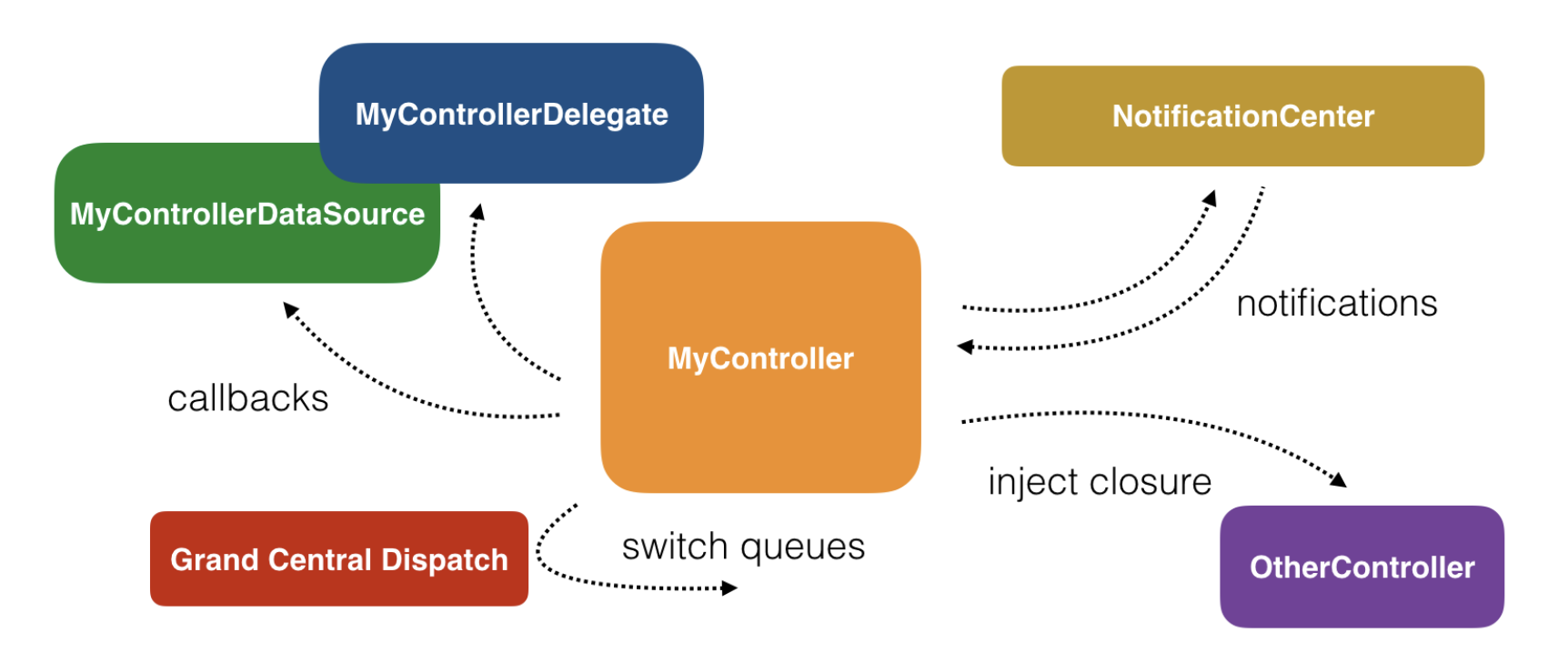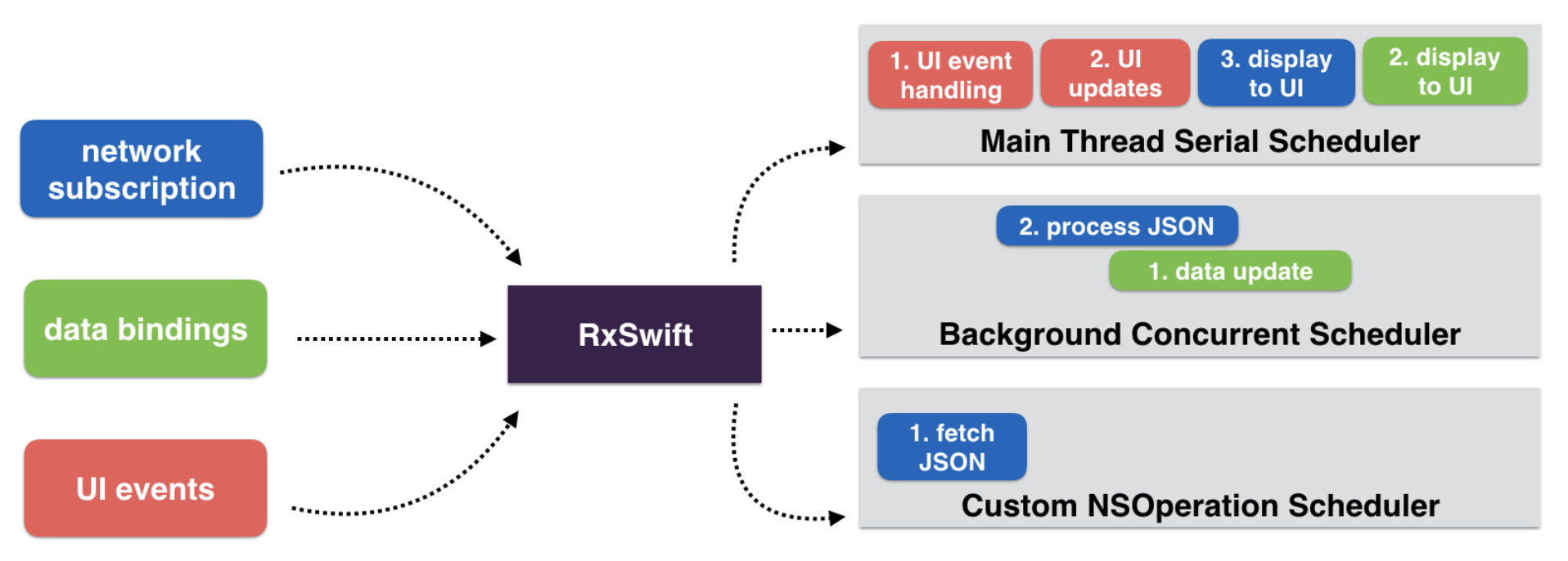«RxSwift - Reactive Programming with Swift»
Cocoa and UIKit Asynchronous APIs / Cocoa和UIKit异步API
Apple has provided lots of APIs in the iOS SDK that help you write asynchronous code. You’ve used these in your projects, and probably haven’t given them a second thought because they are so fundamental to writing mobile apps. You’ve probably used most of the following:
苹果公司在iOS SDK中提供了大量API,可帮助您编写异步代码。你在项目中使用了这些,可能没有更多想想,因为它们是编写移动应用程序的根本。 您可能已经使用了以下大部分内容:
- NotificationCenter: To execute a piece of code any time an event of interest happens, such as the user changing the orientation of the device, or the software keyboard showing or hiding on the screen.
- NotificationCenter:在任何感兴趣的事件发生时执行一段代码,例如用户更改设备的方向,或显示或隐藏在屏幕上的软件键盘。
- The delegate pattern: To define methods to be executed by another class or API at arbitrary times. For example, in your application delegate you define what should happen when a new remote notification arrives, but you have no idea when this piece of code will be executed, or how many times it will execute.
- 委托模式:定义在任意时间由另一个类或API执行的方法。例如,在您的应用程序委托中,您定义当新的远程通知到达时应该发生什么,但是您不知道这段代码将被执行,或者执行多少次。
- Grand Central Dispatch: To help you abstract the execution of pieces of work. You can schedule code to be executed sequentially in a serial queue, or run a multitude of tasks concurrently on different queues with different priorities.
- GCD:帮助您抽象执行工作。您可以调度在串行队列中顺序执行的代码,或者在具有不同优先级的不同队列上同时运行多个任务。
- Closures: To create detached pieces of code that you can pass between classes so each class can decide whether to execute it or not, how many times, and in what context.
- 闭包:创建可以在类之间传递的分离的代码段,以便每个类可以决定是否执行它,多少次以及在什么上下文中。

Asynchronous programming glossary / 异步编程词汇表
- State, and specifically, shared mutable state / 状态,特别,共享可变状态
- Imperative programming / 命令式编程
- Side effects / 副作用
- Declarative code / 声明代码
- Reactive systems / 反应体系
- Responsive: Always keep the UI up to date, representing the latest app state.
- 响应:始终保持用户界面最新,代表最新的应用状态。
- Resilient: Each behavior is defined in isolation and provides for flexible error recovery.
- 适应力强的:每个行为被隔离定义并提供灵活的错误恢复。
- Elastic: The code handles varied workload, often implementing features such as lazy pull-driven data collections, event throttling, and resource sharing.
- 弹性:代码处理不同的工作负载,通常实现诸如延迟拉驱动数据收集,事件调节和资源共享等功能。
- Message driven: Components use message-based communication for improved reusability and isolation, decoupling the lifecycle and implementation of classes.
- 消息驱动:组件使用基于消息的通信来提高可重用性和隔离度,解除生命周期和类的实现。
The three building blocks of Rx code are observables, operators, and schedulers.
observables
- A next event: An event which “carries” the latest (or “next”) data value. This is the way observers “receive” values.
- 下一个事件:“携带”最新(或“下一个”)数据值的事件。 这是观察员“收到”价值观。
- A completed event: This event terminates the event sequence with success. It means the Observable completed its life-cycle successfully and won’t emit any other events.
- 完成事件:此事件成功终止事件序列。 这意味着Observable可以成功完成其生命周期,也不会发生任何其他事件。
- An error event:The Observable terminates with an error and it will not emit other events.
- 错误事件:Observable出现错误并终止,不会发出其他事件。
operators

schedulers
